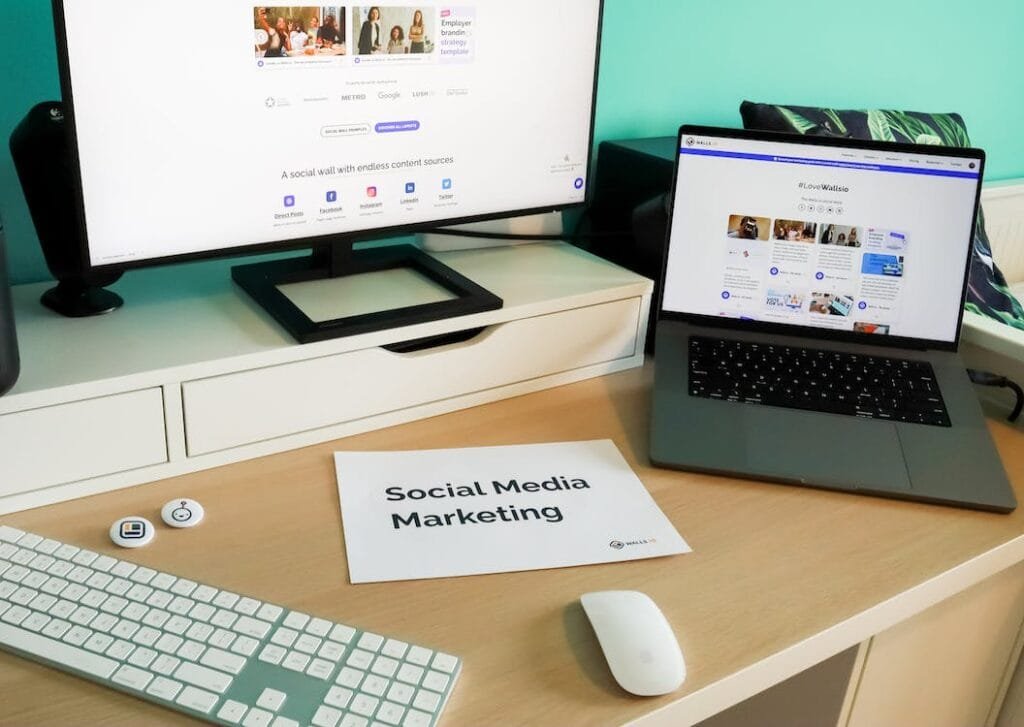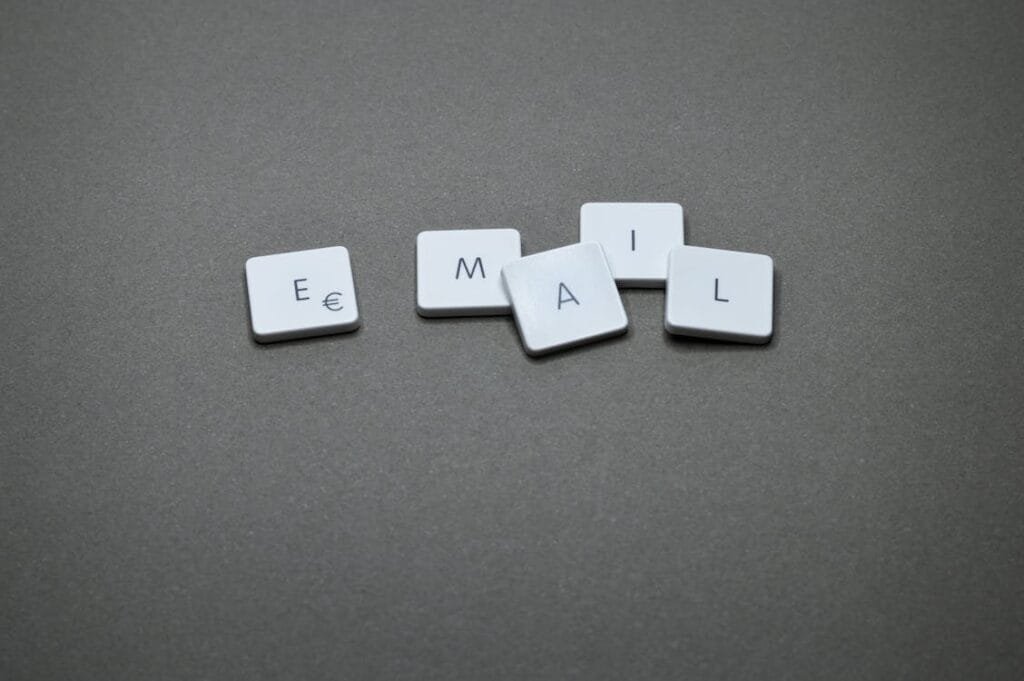Building Brand Loyalty
Importance of Brand Loyalty
Brand loyalty is a crucial element for any business aiming to achieve long-term success. It signifies a commitment from customers who consistently choose your brand over competitors, translating into repeat purchases and enhanced profitability. According to a report, 79% of consumers state that loyalty programs influence their likelihood to continue purchasing from a brand, underscoring the pivotal role loyalty plays in consumer behavior EY.
Furthermore, brands that successfully forge emotional connections with their customers outperform their competitors by 85% in sales growth EY. These emotional connections often arise from ethically-focused marketing practices, as 73% of U.S. customers express a preference for doing business with ethical companies TechTarget.
Benefits of Fostering Loyalty
Investing in brand loyalty yields multiple benefits that can significantly impact your business’s bottom line. Establishing loyalty not only enhances customer retention rates but also cultivates a community of advocates who promote your brand through word-of-mouth referrals.
The following table outlines the advantages of fostering brand loyalty:
| Benefit | Description |
|---|---|
| Increased Customer Retention | Loyal customers are more likely to repurchase, reducing churn rates. |
| Higher Lifetime Value | Customers who exhibit brand loyalty tend to spend more over time. |
| Cost-Effective Marketing | Retaining existing customers is often cheaper than acquiring new ones. |
| Positive Word-of-Mouth | Satisfied loyal customers serve as brand ambassadors, enhancing reputation. |
| Emotional Engagement | Strong emotional ties foster deeper connections, leading to customer loyalty. |
Effective loyalty marketing tactics, such as brand loyalty programs and personalized customer experiences, can further leverage these benefits, leading to a stronger brand presence in the market.
In conclusion, prioritizing brand loyalty not only leads to increased sales and a solid customer base but also enhances overall customer satisfaction. By understanding the importance and benefits of cultivating loyalty, you can adopt strategies that will drive sustainable growth and customer retention for your business. For further insights, explore our resources on managing customer loyalty and measuring brand loyalty.
Understanding Customer Expectations
To effectively implement loyalty marketing tactics, you must first comprehend your customers’ expectations. This includes adhering to ethical standards, maintaining transparency in marketing, and fostering confidence in pricing. Each of these elements is crucial to ensuring customer satisfaction and nurturing brand loyalty.
Meeting Ethical Standards
Ethics in marketing transcends mere compliance; it encompasses the responsibility organizations have toward their customers. Implementing ethical practices not only reflects honesty but also builds credibility. This can significantly enhance your brand’s reputation and encourage repeat business. Customers are more likely to remain loyal to brands that prioritize ethical standards in their operations.
Transparency in Marketing
Transparency is a vital component in establishing customer trust. Most consumers are aware that companies gather personal information; however, it is equally important for you to communicate what information is collected and how it will be used (TechTarget). By openly sharing your data practices and marketing strategies, you foster an environment of trust, further solidifying loyalty.
| Transparency Practices | Customer Impact |
|---|---|
| Sharing data collection methods | Builds trust |
| Disclosing marketing strategies | Enhances loyalty |
| Offering insights into privacy policies | Encourages repeat business |
Pricing Confidence and Trust
Pricing strategy plays a pivotal role in your overall marketing approach. Being transparent about costs helps build trust. Clearly communicate your fixed prices and demonstrate how these prices align with the quality and value of your products/services (TechTarget). Customers prefer businesses that are open about transaction processes, which can greatly influence their purchasing decisions.
| Pricing Strategies | Customer Trust Level |
|---|---|
| Fixed pricing disclosures | High |
| Value-based pricing alignment | Medium |
| Hidden fees and charges | Low |
Adopting ethical standards, ensuring transparency, and fostering pricing confidence are not simply best practices. They are essential strategies for building enduring customer loyalty. For further insights on enhancing brand allegiance, explore our resources on brand loyalty programs and customer loyalty strategies.
Effective Loyalty Marketing Tactics
To cultivate and enhance brand loyalty, implementing effective loyalty marketing tactics is essential. Below are three proven strategies that can help you build a lasting relationship with your customers.
Customer Win-Back Campaigns
Customer win-back campaigns are an effective way to re-engage lapsed customers. Research indicates that reconnecting with existing customers is significantly more cost-effective than acquiring new ones—five times less expensive, according to HubSpot. Implementing targeted campaigns can encourage customers to return, often yielding a 26% success rate in bringing back customers with the promise of special offers or rewards.
The following table summarizes some key aspects of customer win-back campaigns:
| Feature | Benefit |
|---|---|
| Special Discounts | Attracts previous customers back |
| Loyalty Programs | Incentivizes recurring purchases |
| Customer Feedback | Helps improve offerings and service |
By engaging customers through discount offerings or loyalty rewards, you not only reactivate their interest but also reinforce their value to your brand.
Tiered Loyalty Programs
Implementing a tiered loyalty program can substantially boost customer retention. This type of program incentivizes customers by rewarding them with points for each purchase, allowing them to accumulate points and redeem them for desirable rewards. This strategy fosters a sense of belonging and value, encouraging previous customers to return (impact.com).
The advantages of tiered loyalty programs include:
| Tier Level | Points Required | Reward |
|---|---|---|
| Bronze | 0 – 499 | Exclusive discounts |
| Silver | 500 – 999 | Free shipping |
| Gold | 1000+ | Personalized gifts |
With clear reward tiers and a sense of progression, customers are motivated to increase their engagement with your brand.
Sephora and H&M Loyalty Programs
Both Sephora and H&M showcase exemplary loyalty programs that effectively engage customers.
Sephora’s Beauty Insider Program allows members to accumulate points for every dollar spent. Customers can redeem these points for various rewards, including gift cards, discounts, and exclusive beauty tutorials (impact.com). This rewards structure addresses a common customer pain point—making higher beauty product prices more palatable.
H&M’s Loyalty Program offers both a free and a paid membership option. The free version provides various rewards and discounts, while the paid membership delivers additional benefits such as free shipping, early access to new drops, and special in-store experiences (impact.com). This tiered approach allows customers to choose the level of commitment that best fits their shopping style.
Incorporating strategies from successful loyalty programs like Sephora and H&M can inspire your business to create compelling brand loyalty programs that resonate with your audience, encouraging them to continue supporting your brand.
Successful Loyalty Program Examples
Incorporating effective loyalty marketing tactics is essential for fostering brand loyalty. Below are examples of successful loyalty programs from leading brands, which demonstrate how innovative strategies can enhance customer retention and satisfaction.
Starbucks Rewards
Starbucks Rewards stands out as one of the most popular loyalty programs with over 40 million members. This program incentivizes purchases by offering stars (points) that can be redeemed for various rewards, including free drinks, food, priority service, birthday bonuses, merchandise, contests, and games. The attractiveness of this program lies in its versatility; members have multiple avenues to earn points and redeem rewards, ensuring that Starbucks remains top of mind for customers.
| Feature | Description |
|---|---|
| Membership | 40 million members |
| Earning Stars | Points for every purchase |
| Rewards | Free drinks, food, merchandise, contests |
| Engagement | Games and promotions to encourage participation |
For a deeper understanding of how loyalty programs like Starbucks Rewards can drive customer engagement, you can explore our article on brand loyalty programs.
Sephora’s Beauty Insider Program
Sephora’s Beauty Insider loyalty program effectively categorizes its members into three tiers: Insider, VIB (Very Important Beauty), and Rouge, based on their spending levels. Each tier provides members with an increasing array of benefits, such as exclusive events, first access to new product releases, personalized “meet & greets,” gift cards, and an online forum for member interaction. This tiered approach not only rewards loyalty but also motivates customers to increase their spending to reach higher tiers, fostering deeper engagement.
| Tier | Benefits |
|---|---|
| Insider | Basic benefits |
| VIB | Exclusive events and early access |
| Rouge | Additional perks, gift cards and more |
To learn more about how tiered systems can benefit your brand’s loyalty program, consult our article on building brand loyalty.
Dollar Shave Club’s Loyalty Program
Dollar Shave Club employs a subscription-based loyalty model that fosters a sense of community while providing tangible benefits. Members enjoy perks such as free shipping, exclusive savings, birthday gifts, early access to new products, a member-only grooming magazine, and personalized product recommendations. This dedicated customer support approach emphasizes building sustainable relationships with customers, ensuring long-term loyalty and engagement.
| Benefit | Description |
|---|---|
| Free Shipping | On all subscriptions |
| Exclusive Savings | Member-only discounts |
| Personalized Recommendations | Tailored grooming products |
| Membership Engagement | Grooming magazine and customer support |
For additional insights on subscription models and customer loyalty, check out our discussion on customer loyalty strategies.
Adopting successful loyalty program strategies similar to these examples can significantly boost your brand loyalty and enhance customer retention. By understanding the specific features and benefits offered by these programs, you can develop and implement your own effective loyalty marketing strategies.
Evolving Loyalty Programs
As the landscape of loyalty marketing continues to shift, adopting innovative approaches is essential for maintaining relevance and effectiveness. Here, we explore three key trends shaping the evolution of loyalty programs: personalization and AI integration, omnichannel experiences, and social media engagement.
Personalization and AI Integration
Personalization has become a hallmark of successful loyalty marketing tactics. By leveraging data analytics and artificial intelligence (AI), you can tailor your offerings to fit individual customer preferences and behaviors. Companies that utilize AI insights are better equipped to send relevant and timely promotions, enhancing the customer experience and ensuring a significant value exchange (CMSWire).
This level of customization not only increases customer satisfaction but also fosters deeper emotional connections with your brand, leading to greater loyalty. In fact, according to Gallup, companies that connect emotionally with their customers see an 85% sales growth advantage over their competitors. Investing in personalization will help reinforce the relationship between you and your consumers.
| Benefit of Personalization | Metric |
|---|---|
| Increased customer retention | 79% of consumers state loyalty programs influence their purchasing decisions |
| Enhanced customer engagement | 80% of participants purchased more from brands they joined loyalty programs with |
Omnichannel Experiences
To engage today’s consumers effectively, implementing omnichannel loyalty experiences is crucial. This approach ensures seamless interaction across all channels—be it online, in-store, or via mobile devices. Your loyalty program should integrate with mobile wallets and payment systems, allowing customers to track rewards and redeem points effortlessly.
Tim Mason, CEO of Eagle Eye, emphasizes the need for a customer-centric approach that facilitates continuity in the customer experience. An omnichannel strategy will not only increase customer engagement but also promote brand loyalty as customers feel recognized and valued across different platforms.
Social Media Engagement
Social media has transformed the way brands connect with their customers. By creating influencer-driven loyalty initiatives, you can leverage platforms where consumers spend significant time. Engaging with your audience on social media through personalized content, promotions, and incentives fosters a loyal community around your brand.
Studies show that brands that harness social media effectively can significantly boost their loyalty programs. It is essential to cultivate an online presence that not just promotes products but also builds relationships, encourages feedback, and responds to customer inquiries in real time.
In conclusion, evolving your loyalty programs through personalization, omnichannel integration, and effective social media engagement can significantly strengthen brand loyalty and drive sustained growth. Consider these approaches as integral components of your overall loyalty marketing strategy. For further insights, explore our resources on brand loyalty programs and customer loyalty strategies.
Strategy and Budget Allocation
Implementing effective loyalty marketing tactics requires careful planning and strategic budget allocation. This section discusses how to set marketing budgets, allocate funds effectively, and develop loyalty points systems to enhance brand loyalty.
Setting Marketing Budgets
Establishing a marketing budget is a foundational step in your loyalty marketing strategy. It is essential to consider not only the overall budget but also how it aligns with your company’s revenue goals and expectations. Currently, the average marketing budget has decreased from 9.1% of company revenue in 2023 to 7.7% in 2024, as many businesses face increased scrutiny on spending (Paytronix).
| Year | Average Marketing Budget (% of Revenue) |
|---|---|
| 2023 | 9.1% |
| 2024 | 7.7% |
Allocating sufficient funds specifically for loyalty programs is advisable, as retaining existing customers often costs less than acquiring new ones. Determine the channels most effective for loyalty campaigns, which include digital marketing platforms, email marketing, and social media channels.
Allocating Funds Effectively
Once the budget is set, strategically allocating funds across various marketing channels becomes critical. It is wise to commit a substantial portion of the budget to loyalty programs and enrollment channels. This enables you to create and maintain a robust loyalty system that resonates with your audience (Paytronix). Consider dividing the budget according to the following suggested allocations:
| Marketing Channel | Suggested Allocation (%) |
|---|---|
| Loyalty Programs | 30% |
| Digital Marketing | 25% |
| Social Media | 20% |
| Email Marketing | 15% |
| Market Research | 10% |
This allocation ensures that your loyalty initiatives are prioritized, enhancing customer engagement and loyalty retention.
Loyalty Points Systems
Developing a loyalty points system is crucial in any comprehensive loyalty marketing strategy. This system rewards customers with points for purchases or interactions, leading to increased visit frequency and repeat purchases. It also fosters customer engagement while collecting data and feedback to tailor the program to meet customer expectations (Paytronix).
Incorporate tiered rewards within the loyalty points system to motivate higher spending and increase participation. For example, you might structure it as follows:
| Tier | Points Required | Rewards |
|---|---|---|
| Bronze | 0 – 499 Points | 5% Off |
| Silver | 500 – 999 Points | 10% Off + Exclusive Offers |
| Gold | 1000+ Points | 15% Off + Free Shipping + Birthday Gift |
This kind of structured rewards program can lead to a “lock-in” effect, as seen with subscription-based models like Amazon Prime, where members consistently show increased spending compared to non-members (LoyaltyLion).
By effectively setting your marketing budgets, allocating funds wisely, and establishing a robust loyalty points system, you are well on your way to enhancing brand loyalty and ensuring the long-term success of your loyalty marketing tactics. For more insights into this topic, consider exploring our resources on customer loyalty management or increasing brand loyalty.
Measuring Customer Loyalty
Understanding how to measure customer loyalty is essential for any business seeking to enhance its loyalty marketing tactics. This section will cover three vital metrics: Customer Retention Rate, Customer Lifetime Value, and Net Promoter Score.
Customer Retention Rate
The Customer Retention Rate (CRR) is a critical metric that quantifies the percentage of customers a business retains over a specific period. According to research, the average CRR for B2B brands is 77% (CustomerGauge). A higher retention rate indicates effective loyalty strategies and customer satisfaction.
The formula for calculating the retention rate is:
[
\text{CRR} = \left( \frac{\text{Customers at End of Period} – \text{New Customers Acquired}}{\text{Customers at Start of Period}} \right) \times 100
]
| Year | Customers at Start | New Customers | Customers at End | Retention Rate (%) |
|---|---|---|---|---|
| 2021 | 1000 | 200 | 950 | 75% |
| 2022 | 950 | 150 | 900 | 73% |
| 2023 | 900 | 250 | 850 | 78% |
Customer Lifetime Value
Customer Lifetime Value (CLV) is a metric that illustrates how much profit a customer generates throughout their relationship with your business. An ideal CLV should be at least three times the cost of acquiring that customer (CustomerGauge).
To calculate CLV, you can use the following formula:
[
\text{CLV} = \text{Average Purchase Value} \times \text{Average Purchase Frequency} \times \text{Average Customer Lifespan}
]
| Metric | Value |
|---|---|
| Average Purchase Value | $100 |
| Average Purchase Frequency | 5 times/year |
| Average Customer Lifespan | 3 years |
| CLV | $1500 |
Net Promoter Score
The Net Promoter Score (NPS) is a pivotal metric that gauges customer loyalty by measuring their likelihood to recommend a product or service to others. NPS ranges from -100 to 100, with scores of 9 or 10 categorizing respondents as “Promoters,” the most loyal customers. These Promoters often provide insights into future revenue growth.
To calculate NPS, you survey customers with the question: “On a scale from 0 to 10, how likely are you to recommend our product/service?” The formula to determine your NPS is:
[
\text{NPS} = \% \text{Promoters} – \% \text{Detractors}
]
| Score Range | Category |
|---|---|
| 0 – 6 | Detractors |
| 7 – 8 | Passives |
| 9 – 10 | Promoters |
Understanding these metrics—Customer Retention Rate, Customer Lifetime Value, and Net Promoter Score—enables you to implement effective customer loyalty strategies and continually refine your approach to fostering brand loyalty. For further insights, explore our resources on measuring brand loyalty and brand loyalty statistics.
Enhancing Customer Loyalty
To effectively enhance customer loyalty, you must focus on fostering emotional connections, developing direct relationships with consumers, and identifying future growth opportunities.
Emotional Connections
Establishing emotional connections with your customers plays a crucial role in strengthening brand loyalty. Research indicates that companies that create emotional bonds with their customers outperform their competitors in sales growth by 85% (EY). By engaging your audience on an emotional level, you can cultivate deeper relationships that go beyond mere transactions.
Consider implementing loyalty programs that resonate with your customers’ values and aspirations. Tailoring rewards and experiences to align with their preferences fosters that emotional engagement. You can leverage brand loyalty techniques to develop campaigns that evoke positive feelings and encourage customers to remain loyal to your brand.
Direct Relationships with Consumers
Developing direct relationships with consumers is essential for enhancing loyalty. Loyalty programs offer a unique opportunity to shift from a transactional focus to building genuine connections through personalized experiences, community engagement, and trust-building. This approach allows you to collect valuable customer insights, including zero-party (0P) and first-party (1P) data, which can inform your future marketing and engagement strategies.
By nurturing direct relationships, you can create a more interactive platform for customers to share their feedback and preferences. This fosters a sense of community and belonging, encouraging continued patronage. Where applicable, consider utilizing customer loyalty management systems to enhance communication and track customer interactions effectively.
Future Growth Opportunities
Identifying future growth opportunities is vital for maintaining a loyal customer base. As consumer expectations evolve, you should continually assess and adapt your loyalty programs to meet these changing needs. Metrics such as Customer Satisfaction (CSAT) and Net Promoter Score (NPS) can provide insights into customer retention and satisfaction (CustomerGauge).
Additionally, implementing a loyalty points system that rewards customers for purchases and interactions will encourage repeat business. According to research, such systems can significantly increase visit frequency and overall purchasing behavior. Regularly gather data and feedback to ensure your loyalty initiatives meet customer expectations and adapt as necessary, ensuring long-term loyalty and engagement.
Focusing on these key aspects, you can enhance your brand loyalty and ultimately drive sustainable growth for your business. For more insights into fostering loyalty, explore our articles on building brand loyalty and brand loyalty strategies.





















